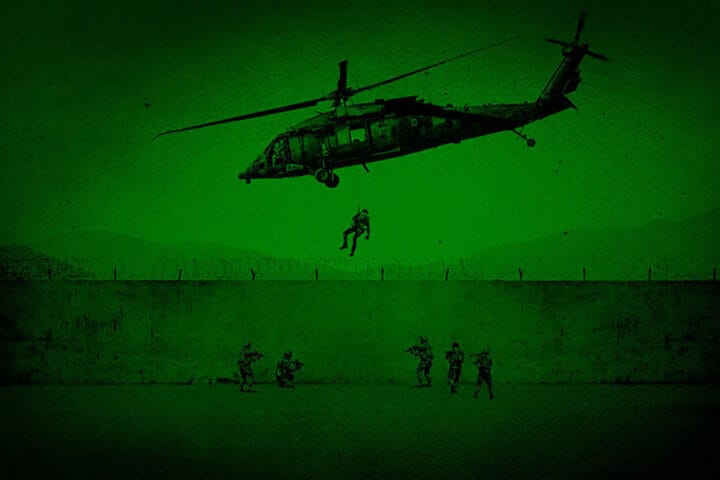“The Diamond Heist” is a Netflix docuseries directed by Jesse Vile, but it bears the unmistakable stamp of executive producer Guy Ritchie. From the very first glimpse, it’s impossible not to be reminded of “Snatch” (2000), the film that catapulted Ritchie to international fame
“The Diamond Heist” blends the familiar elements of Ritchie’s cinematic style with a story and setting that will inevitably feel very familiar.
Guy Ritchie, the acclaimed director and producer known for his gritty crime comedies and action-packed narratives, executive produces this three-part exploration of a daring real-life diamond heist. This isn’t just another retelling of a historical crime; with Ritchie’s involvement, viewers can expect a dynamic and engaging journey into the heart of a bold caper.
London at the Turn of the Millennium
The turn of the millennium was a period of intense national focus, with the Millennium celebrations taking center stage. The opening of the Millennium Dome was a highly publicized event, intended to symbolize an optimistic and forward-looking Great Britain. However, the ambitious project was not without its critics, facing considerable debate about its enormous cost and, ultimately, falling short of projected visitor numbers. Economically, London in the early 2000s was experiencing a period of growth, solidifying its position as a major global financial center. The service sector, particularly financial services and related professional fields, dominated the city’s economy. While the UK economy as a whole was generally strong at that time, inequalities persisted, with reports indicating a widening gap and worsening financial situations for those with lower incomes.
However, the city also grappled with social problems such as crime and poverty, which remained significant concerns for many residents. In the political sphere, the Labour government, led by Tony Blair, was in power, and a significant development was the ongoing process of devolution across the UK. Specifically for London, the year 2000 marked the establishment of the Greater London Authority and the election of its first directly elected mayor, Ken Livingstone, representing a notable shift in the city’s governance. Against this backdrop, the Millennium Dome, a project with strong political backing that also became a subject of public debate, served as a prominent backdrop for the attempted robbery. The economic climate of opportunity, juxtaposed with existing social inequalities, may have influenced the motivations of those who planned the crime. Furthermore, the political significance and public scrutiny surrounding the Millennium Dome could have affected the overall perception and impact of the audacious heist attempt.
The World’s Most Expensive Diamond
At the heart of “Diamond Heist” is the incredible true story of an attempted robbery targeting the De Beers diamond exhibition held at London’s Millennium Dome. The audacious plan unfolded on November 7, 2000, at the iconic structure in Greenwich, Southeast London, which has since been renamed the O2 Arena. The primary target of this ambitious heist was the Millennium Star, an incredibly flawless pear-shaped diamond weighing an impressive 203.04 carats. At the time of the attempted robbery, the Millennium Star alone was estimated to be worth around £200 million, though the total value of the diamonds on display, including the estimated Millennium Jewels, was closer to £350 million. Today, the equivalent value of such a haul could be significantly higher. The methods employed by the local London gang were nothing short of audacious: they planned to use a JCB excavator to breach the Dome’s perimeter, seize the precious gems, and make a swift escape by speedboat along the River Thames. In addition to the heavy machinery and getaway boat, the perpetrators were also equipped with smoke grenades, nail guns, and sledgehammers, suggesting a plan that involved both brute force and attempts to disorient security. The sheer audacity of using a construction vehicle for a daytime robbery at such a prominent location, combined with the cinematic image of a speedboat getaway, makes this attempted heist a perfect story to captivate audiences.

The Protagonists
At the center of the narrative is Lee Wenham, a member of the gang that attempted the daring robbery. His first-hand account promises to offer a unique perspective on the planning and execution of the heist. Interestingly, Wenham is also set to release a book titled “Diamond Gangster” shortly after the documentary’s premiere, suggesting a deeper dive into his experiences. Counterbalancing the perspective of the criminals is DCI John Swinfield, head of the Metropolitan Police Flying Squad at the time, who led the surveillance operation that ultimately thwarted the robbery. His insights detail the police investigation, their strategies, and their perspective on the audacious attempt. The documentary also features other police officers who played crucial roles in preventing the robbery, providing a broader view of law enforcement efforts. Additionally, Tom Thorn, who was the head of security for De Beers at the time of the exhibition, offers his perspective on the security measures in place and the implications of the attempted theft. Hearing directly from these key individuals, both those who planned the crime and those who prevented it, will undoubtedly provide a more comprehensive and nuanced understanding of the events, their underlying motivations, and the strategies employed by both sides.
A Documentary in Full Ritchie Style
Everything in “The Diamond Heist” is familiar, and the only things missing are Jason Statham and Stephen Graham. We see the faces of the robbers and how they organized the heist, their motivations, the point of view of the police, and interviews with those who cut the diamond. But, as in Ritchie’s film from that same year, the protagonists are the criminals and their stories.
“The Diamond Heist” even has almost the same sense of humor as Guy Ritchie’s films, and even the fast-paced rhythm and the soundtrack are reminiscent of his movies. Without quite being a tribute to the British director’s filmography, “The Diamond Heist” successfully translates that style to the documentary genre through interviews with the protagonists and, above all, through reconstructions of the events.
And, of course, the documentary’s editing: pure Ritchie style. Fast-paced, dynamic, full of humor, and with quick, accelerated sequences set to the rhythm of the soundtrack.
Our Opinion
The documentary we all expected, with the characteristic stamp we all anticipated. After seeing so many of his films, all of them similar, it’s logical that the documentary doesn’t stand out or invent anything new in terms of cinematography. However, it’s refreshing and, as always, absolutely impeccable in terms of direction, editing, and production.
Where to Watch “The Diamond Heist”











